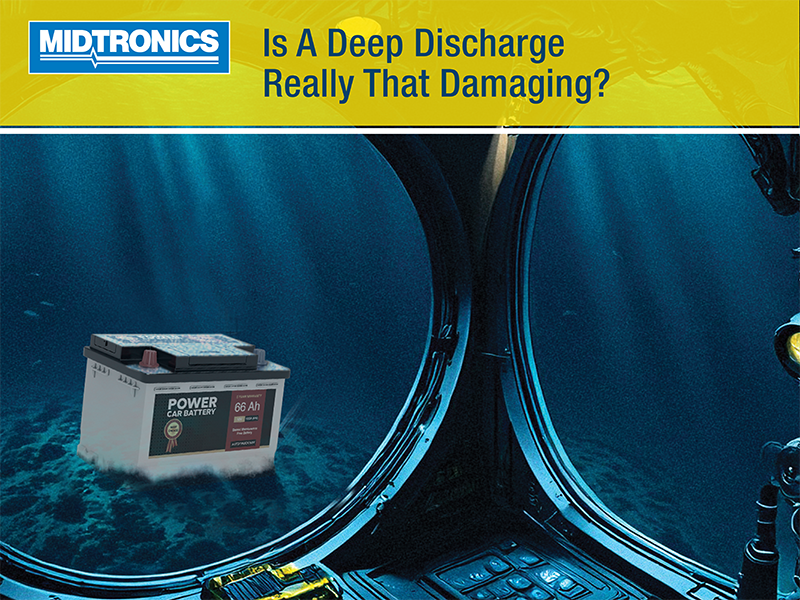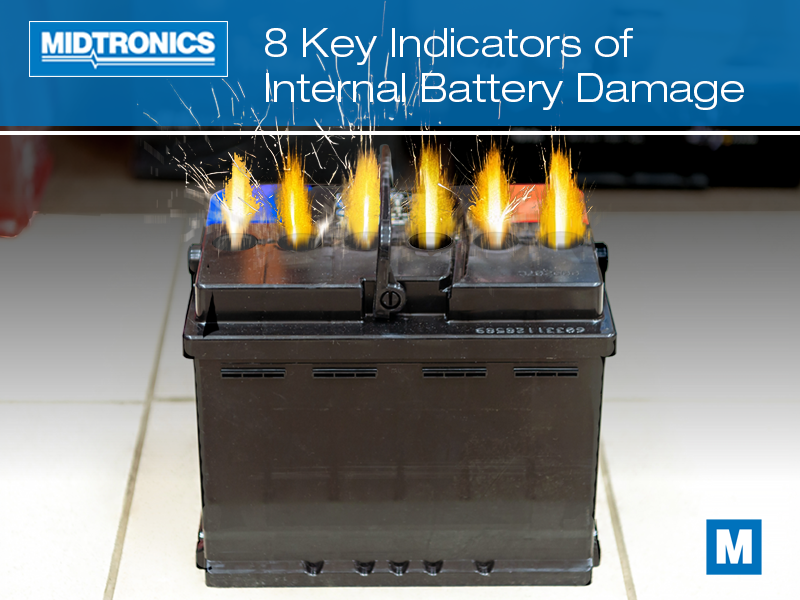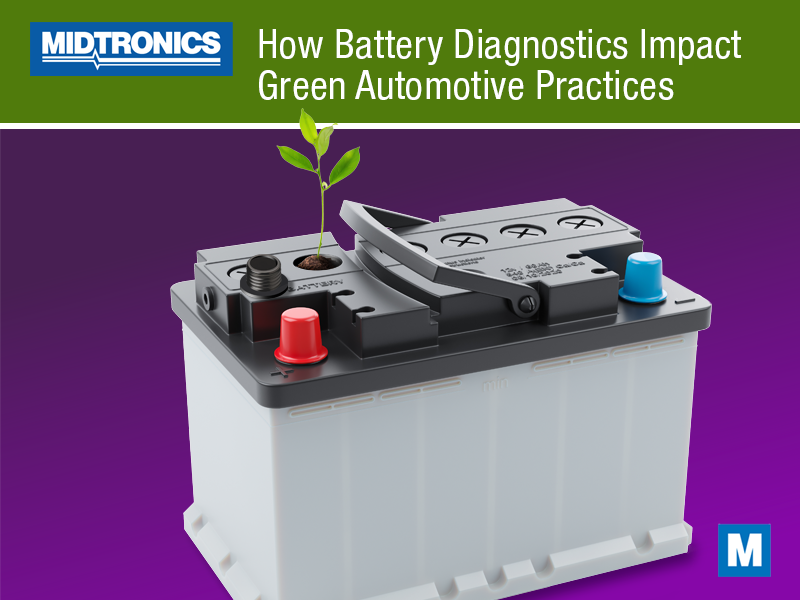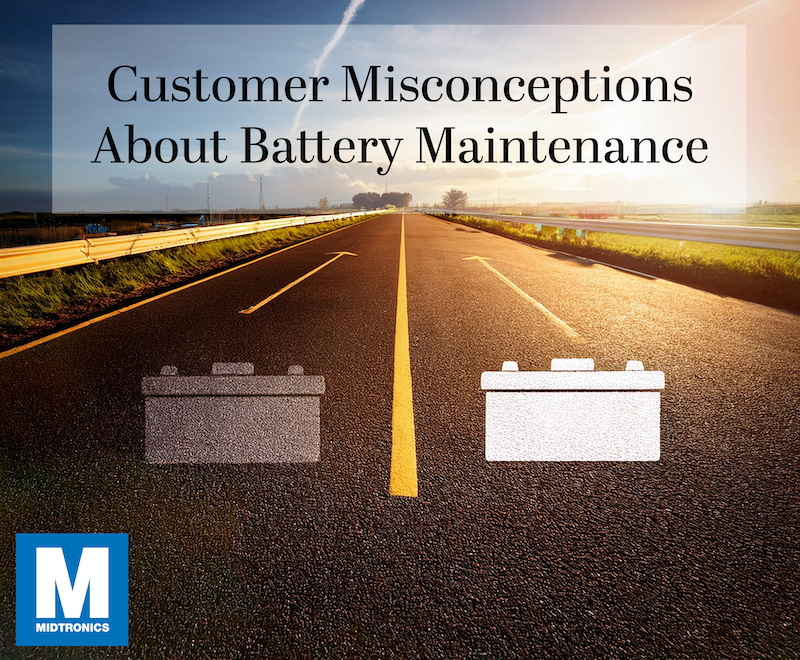Picture the customer that rolls into your shop complaining their car won’t start. You test the battery and find it’s sitting at an astoundingly low 7 volts. Maybe they left the lights on overnight. Maybe their alternator isn’t pulling its weight. Either way, that battery has suffered a deep discharge. The big question is how much damage has really been done?
If you’re new to the automotive world, you might assume a battery can simply be recharged and sent on its way. After all, modern lithium-ion batteries in phones and laptops handle deep discharges all the time, as do deep-cycle batteries for RVs and marine applications. But automotive lead-acid batteries are a different story.
Learn more about what happens during a deep discharge and what can be done about it.
What Is a Deep Discharge?
A deep discharge happens when a battery is drained well below its recommended voltage level. For a typical 12-volt lead-acid battery, anything below 10.5 volts under load or 11.8 volts at rest is considered deep discharge territory.
Lead-acid batteries are designed for short bursts of high energy such as starting the engine and slightly heavier discharge cycles like powering accessories. They’re not built to be drained down to the last drop of energy like a deep-cycle marine or RV battery. When a car battery experiences a deep discharge, irreversible chemical changes start taking place inside.
The Science Behind Battery Damage
To understand why deep discharges are harmful, first we’ll look at the chemistry at play. Lead-acid batteries work by converting chemical energy into electrical energy through a reaction between lead dioxide (PbO2), sponge lead (Pb), and sulfuric acid (H2SO4).
When a battery discharges, lead sulfate (PbSO4) forms on the plates, which is normal. But in a deep discharge, excessive lead sulfate accumulates and begins to harden in a process called sulfation. If the sulfate crystals become large and stubborn, they can’t be converted back into active material when the battery is recharged. Over time, this reduces the battery’s capacity and ability to hold a charge.
In severe cases, deep discharges can cause plate shedding where chunks of active material break off, leading to short circuits and total battery failure. And if the battery sits in a discharged state for too long, sulfation becomes permanent.
Common Causes of Deep Discharge
We know deep discharges can be a battery’s enemy. Let’s look at how they happen most often.
1. Parasitic Drains
Even when a vehicle is off, some electrical components like clocks, security systems, and onboard computers continue to draw power. A healthy battery can handle these small loads, but if the car sits too long or there’s an excessive drain, it can be enough to deeply discharge the battery.
2. Leaving Lights or Accessories On
Sometimes drivers leaving their headlights, interior lights, or phone chargers plugged into constant-powered outlets overnight. It’s one of the most common ways a battery gets deeply discharged unintentionally.
3. Faulty Charging System
A failing alternator or voltage regulator means the battery isn’t getting the power it needs to stay charged. If a customer keeps experiencing dead batteries, testing the charging system is a must.
4. Extreme Temperatures
Heat accelerates chemical reactions inside the battery, increasing self-discharge rates. Cold slows down the battery’s ability to deliver power. In winter, a weak or deeply discharged battery may not have the cranking power to start the engine.
5. Long Periods of Inactivity
A parked car isn’t a problem until it sits too long. Without regular charging, a battery self-discharges and can eventually reach deep-discharge levels, leading to permanent damage.
Can a Deeply Discharged Battery Be Saved?
Sometimes – but not always – the damage from a deep discharge can be fixed. If a battery is caught early, before severe sulfation sets in, it might be possible to recover it with a slow, controlled charge. Smart chargers and battery maintainers are designed for this job to break down sulfation gradually and restore some lost capacity. However, if the battery has been sitting dead for weeks or months, the odds of recovery drop significantly.
Jump-starting a deeply discharged battery and expecting it to hold a charge is wishful thinking. The alternator isn’t designed to restore a deeply drained battery – it’s meant to maintain a charged one. Trying to do so can actually overwork the alternator, and there’s a chance it damages it also. Recharging with a proper battery charger is the only real way to give it a fighting chance.
How to Prevent Deep Discharges
For service advisors, technicians, and managers, preventing deep discharges is as important as diagnosing them. Here’s how you can help customers keep batteries healthy:
- Educate customers – Many drivers have no idea that short trips, extended parking, or accessories left on can drain their battery. A simple conversation about battery care or helpful social media posts can save them a headache later.
- Test batteries regularly – Routine battery testing with a Midtronics diagnostic tool can catch weak batteries before they leave customers stranded.
- Recommend a battery maintainer – For customers who don’t drive often, a battery maintainer can keep their battery charged and ready to go.
- Check for parasitic draws – If a customer keeps getting a dead battery, testing for high rates of parasitic drain can help pinpoint the issue.
- Inspect the charging system – A weak alternator might be the real culprit behind a customer’s recurring battery problems.
Final Verdict: Just How Bad Is a Deep Discharge?
A single deep discharge can shorten a battery’s lifespan significantly, and repeated deep cycles can kill it outright. While some deeply discharged batteries can be recovered, they rarely return to full capacity or performance.
The best way to deal with deep discharges is to prevent them. Whether it’s through education, regular testing, or smart charging, keeping a battery above deep-discharge levels means fewer no-start situations, fewer replacements, and happier customers.
So next time you see a battery at tow-in with a dead battery, don’t just charge it up and send it back into service. Take the time to assess the damage, test its health, and offer the right solution. That’s how you build trust, prevent comebacks, and keep customers on the road instead of stuck in a parking lot with a dead battery.




